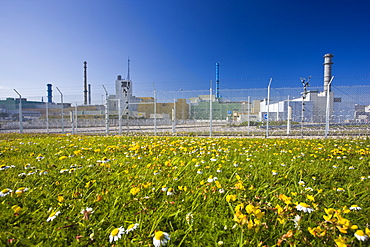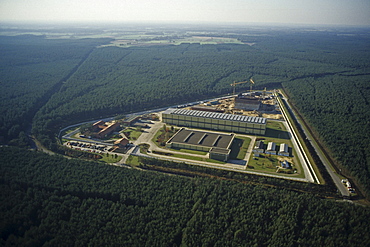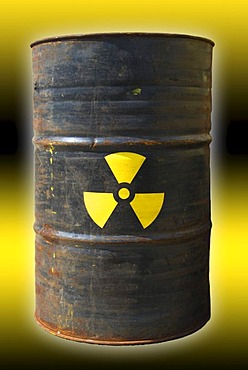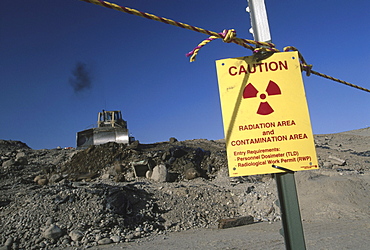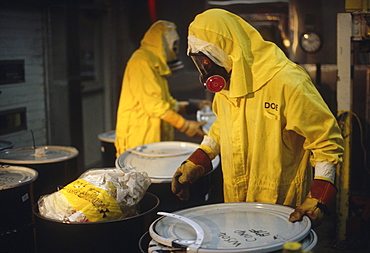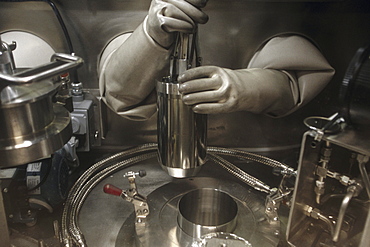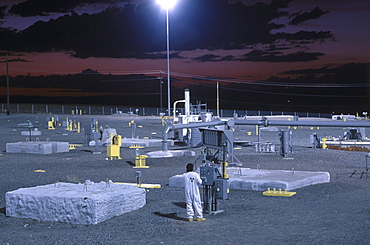Results
2 results found
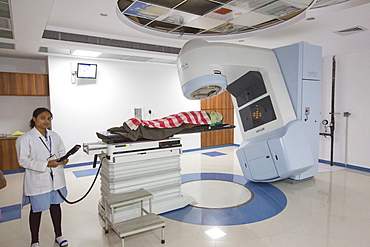
The Muni Seva Ashram in Goraj, near Vadodara, India, is a tranquil haven of humanitarian care. The Ashram is hugely sustainable, next year it will be completely carbon neutral. Its first solar panels were installed in 1984, long before climate change was on anyones agenda. Their energy is provided from solar panels, and wood grown on the estate. Waste food and animal manure is turned inot biogas to run the estates cars and also used for cooking. Solar cookers are also used, and the air conditioning for the hospital is solar run. 70 % of the food used is grown on the estate. They provide an orphanage, schools for all ages, vocational training, care for the elderly, a specialist cancer hospital withstate of the art machinary, and even have a solar crematorium. This shot shows a Varian nuclear proton therapy machine in the specialist cancer hospital.
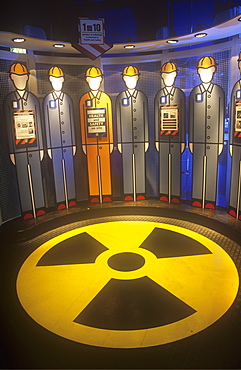
Sellafield Visitor Centre at Sellafield nuclear power satation, Cumbria, England, United Kingdom, Europe
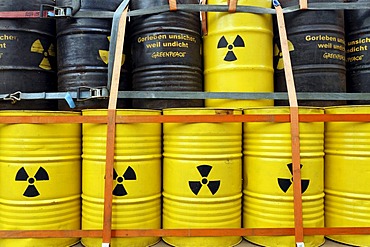
Symbolic nuclear waste barrels stacked on a loading platform, anti-nuclear demonstration against the Gorleben disposal site, Lueneburg, Lower Saxony, Germany, Europe

Rusty barrel with a radiation warning symbol and lettering "Laufzeit verlaengert", German for "extended runtime"
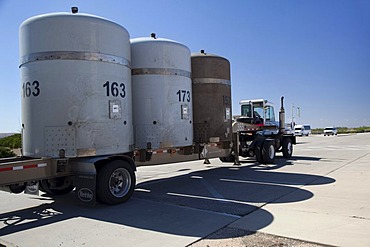
TRUPACT shipping containers used to transport radioactive waste are moved at the Waste Isolation Pilot Plant; nuclear waste from America's nuclear weapons program is shipped by truck from all over the country to be stored in rooms carved out of an ancient
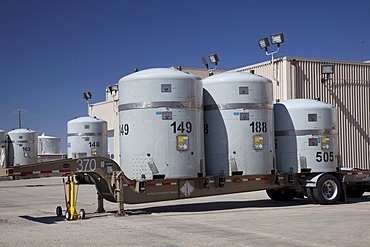
Radioactive plutonium and americium waste from America's nuclear weapons program in TRUPACT shipping containers at the Waste Isolation Pilot Plant; nuclear waste is shipped by truck from all over the country to be stored in rooms carved out of an ancient
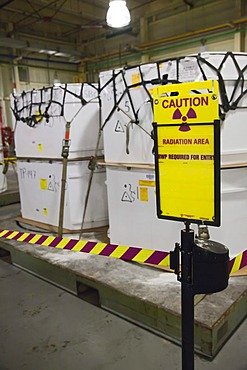
Containers filled with transuranic nuclear waste from America's nuclear weapons program await burial at the Waste Isolation Pilot Plant; the radioactive materials are then stored in rooms carved out of an ancient salt formation a half mile below the Chihu
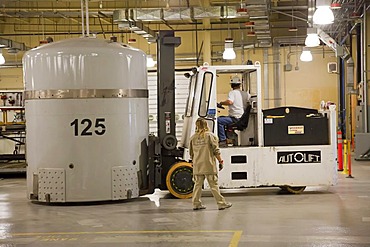
Workers prepare transuranic nuclear waste from America's nuclear weapons program for long-term storage at the Waste Isolation Pilot Plant, here a fork lift moves a TRUPACT shipping container used to transport nuclear waste by truck from distant places.; t

Workers prepare transuranic nuclear waste from America's nuclear weapons program for long-term storage at the Waste Isolation Pilot Plant, here a worker checks radiation levels on the outside of storage containers because they are stored in rooms carved o

Brass tags are used to account for every person going underground at the Waste Isolation Pilot Plant, where radioactive waste from America's nuclear weapons program is stored in an ancient salt formation a half mile below, Carlsbad, New Mexico, USA
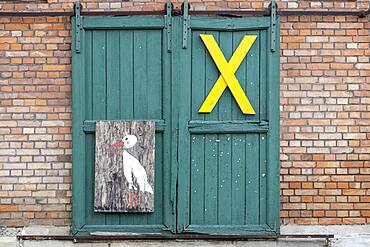
A yellow ""X"", symbol of resistance against nuclear waste transports in the Wendland, on a farm gate in the Rundlingsdorf Kuesten, district of Luechow-Dannenberg, Lower Saxony, Germany, Europe
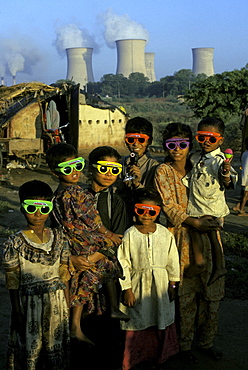
A group of young children gather outside their humble dwellings in India with a Nuclear Plant Facility in the background.

The submarine and cruiser trench at Hanford which has 96 reactor compartments from decommissioned navy ships.
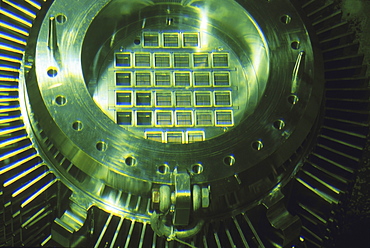
Control Rod Room at the K Reactor which has been shut down, but is going to be used in the near future to store excess plutonium. The four barrels are empty and are being used for training purposes.
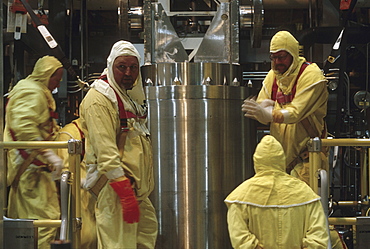
The remote handling of spent fuel in the K Basin. The facility takes almost all the water out of the cannister by heating the water and replacing it with helium. The fuel has been in the water for many years and it is important to get the water out of the fuel for safe storage.
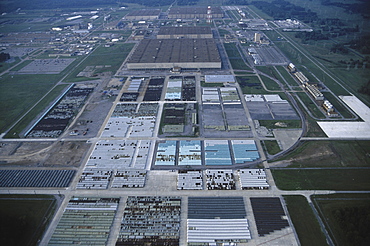
Aerials of the Paducah Gaseos Diffusion Plant, KY. There are 38,000 cylinders of depleted uranium (uranium tetrafloride UF6) which is the waste from the enrichment process of uranium.
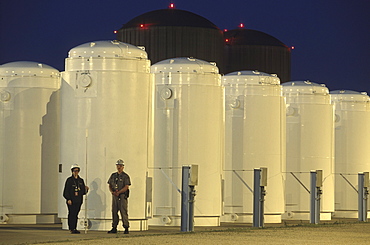
Dry Cask storage. Twelve dry casks in a storage facility at Prairie Island Nuclear Generationg Station, MN.
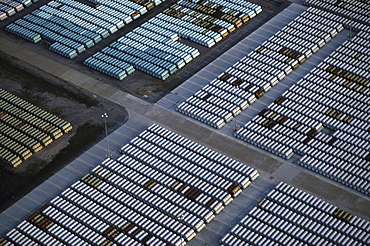
Aerials of the Paducah Gaseos Diffusion Plant, KY. There are 38,000 cylinders of depleted uranium (uranium tetrafloride UF6) which is the waste from the enrichment process of uranium.

Plutonium button Plutonium metal button at Rocky Flats, CO. It consists on 98 percent plutonium and the rest other metals. Terri Coleman is the process specialist who is holding the button and using a brush to clean off oxide.
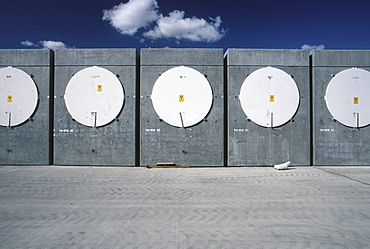
Three Mile Island waste. Transfer of an 80 ton cask holding radioactive debris from the Three Mile Island meltdown reactor. The material was shipped to INEEL 15 years ago for examination and storage until 2035. There are 12 cannisters in each cask. A total of 343 cannisters were shipped to INEEL from Three Mile Island.

Pit viper Engineer Carl Baker at the controls of the compact remote console of the pit viper at the HAMMER facility, Hanford Nuclear Site, WA. This unit will be used to remotely upgrade pipe fitting in the tank farm. There are 600 pits in the tank farm which are used to transfer waste between tanks.
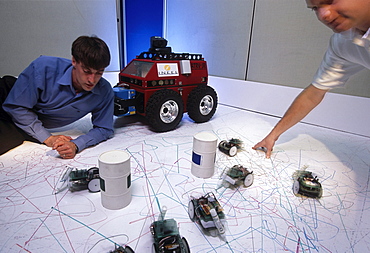
Swarm of micro-robots David Bruemmer, left, and Mark McKay testing a swarm of micro-robots at the INEEL Robotics Laboratory, Idaho Falls, ID. The scientists hope to use a swarm of robots to investigate builings that are contaminated with radioactive waste. The markings show the pattern of the robots and illustrate how a group can cover large areas.

Completely sealed technician sprays water heated to 180 degrees to decontaminate a cask emptied of fuel. Savanah River Site, South Carolina.
